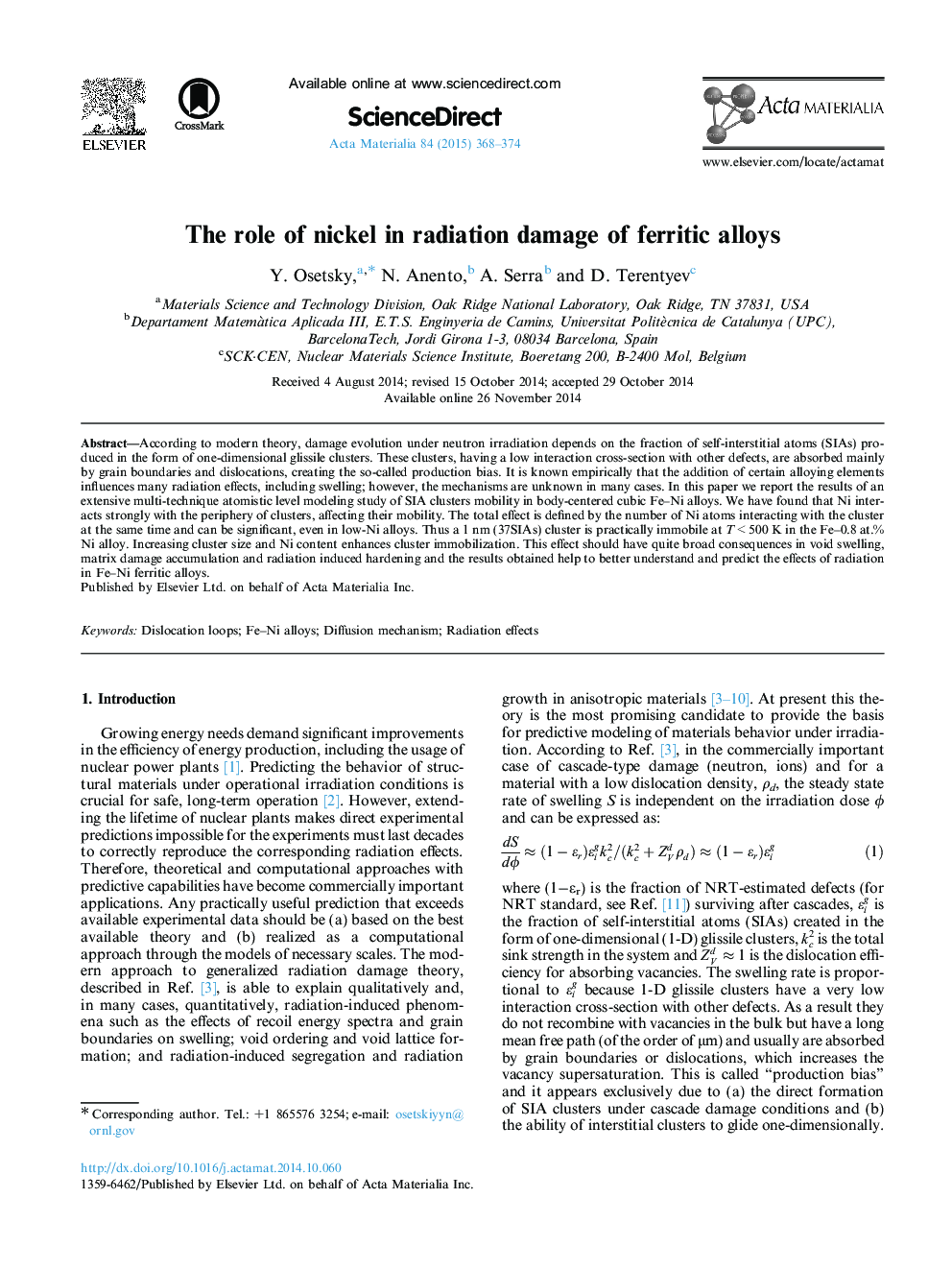| Article ID | Journal | Published Year | Pages | File Type |
|---|---|---|---|---|
| 1445444 | Acta Materialia | 2015 | 7 Pages |
According to modern theory, damage evolution under neutron irradiation depends on the fraction of self-interstitial atoms (SIAs) produced in the form of one-dimensional glissile clusters. These clusters, having a low interaction cross-section with other defects, are absorbed mainly by grain boundaries and dislocations, creating the so-called production bias. It is known empirically that the addition of certain alloying elements influences many radiation effects, including swelling; however, the mechanisms are unknown in many cases. In this paper we report the results of an extensive multi-technique atomistic level modeling study of SIA clusters mobility in body-centered cubic Fe–Ni alloys. We have found that Ni interacts strongly with the periphery of clusters, affecting their mobility. The total effect is defined by the number of Ni atoms interacting with the cluster at the same time and can be significant, even in low-Ni alloys. Thus a 1 nm (37SIAs) cluster is practically immobile at T < 500 K in the Fe–0.8 at.% Ni alloy. Increasing cluster size and Ni content enhances cluster immobilization. This effect should have quite broad consequences in void swelling, matrix damage accumulation and radiation induced hardening and the results obtained help to better understand and predict the effects of radiation in Fe–Ni ferritic alloys.
